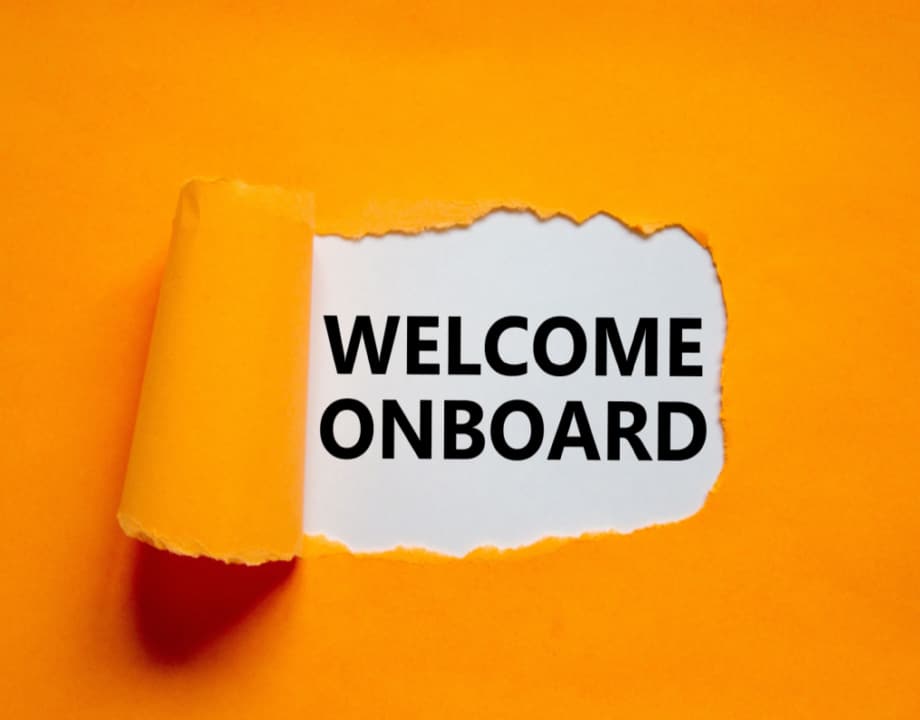Recruitment Blog
The importance of onboarding: How an efficient process can make hiring easier

Onboarding is the process of hiring and training new employees for your team, and it’ll come as no surprise that it’s crucial to have a successful onboarding program.
The onboarding experience starts from the time that your new hire accepts a job offer, and goes well beyond their first week.
It’s a lengthy process that requires many routine check-ins and might take up to 90 days. The long onboarding experience is due to many factors, including each company’s specific setup, individual team members and new team members’ needs.
Onboarding is one of the most critical steps in a company’s expansion plan. Below we’ll delve into the big question, “why is onboarding important?” and we’ll detail what an efficient onboarding process looks like.
WATCH THE ON-DEMAND WEBINAR – Recruiting trends: The global trends you need to embrace in 2022
Why is new employee onboarding so important?
Successful new employee onboarding empowers new hires and hiring managers alike. With just a bit of effort, you can set your new hires up to be successful and productive as they transition into their new job. Better onboarding will not only streamline your hiring process, it’ll also improve your bottom line.
Onboarding helps new employees to feel welcomed by their team members and managers and allows them to quickly get up to speed on what their job entails and how to work best within their new team.
In the next section, we take a more detailed look into why onboarding matters and four ways the employee experience is improved by implementing a positive onboarding process.
Onboarding helps raise employee retention rates
Strong employee retention is a massive win for your organisation.
By ensuring that new hires are happy with their hiring and onboarding process during the first few weeks on the job, you can make sure that you retain the amazing talent you worked so hard to hire.
When your staff feels supported throughout the training and onboarding process, they’re more likely to stay on your team for the long term.
Delivering a well-designed onboarding process can drastically enhance your overall company’s retention rates, which saves you a bunch of time and money that you’d otherwise use for hiring new talent.
Onboarding immerses new hires in your company culture
Most hiring managers want their new employees to be embedded as quickly as possible into their company culture and the onboarding process plays a vital role in that immersion.
Use the onboarding process to showcase your company’s mission, culture and values. Conduct a few fun employee engagement activities, team-building exercises or open discussions to engage your new hires and demonstrate your company culture.
Giving your new hires a good sense of who you are as a company will foster a sense of belonging and create a deeper connection between them and the business.
New employees need to feel supported in their workspace, so ensuring they feel like part of the team is crucial to employee satisfaction and retention.
Onboarding sets clear expectations for communication
New hires can feel overwhelmed when they enter a company. They may not know how to communicate effectively or what expectations their new job demands. So why is onboarding important? It sets clear expectations, which means less confusion and frustration for everyone involved.
An employee onboarding process can help set clear expectations for communication. Outlined expectations could include daily meetings, messaging or email etiquette and what you expect of new hires in their first few months.
Providing a space for open communication fosters a positive relationship from the start. An open forum for team building also allows new employees to learn how to be a part of your team and company, encouraging greater new hire productivity by eliminating stress and anxiety over expectations.
Regular check-ins between managers and their teams also help new employees feel more comfortable. The manager can use these check-ins to communicate expectations while also providing feedback on how the employee is doing.
Onboarding gives new employees time to get acclimated during training
Successfully onboarded employees typically have an easier time adapting to their new work environment and perform better.
However, you can’t expect your new hires to hit the ground running and immediately start taking on new tasks. The process should be gradual so they have time to get acclimated while they learn new skills and adapt to their new environment.
You can facilitate this through a comprehensive training program that allows employees to familiarise themselves with the work environment and policies.
Give them time to understand your workflows and organisational culture. As a result, you’ll feel more confident in your new hire’s abilities and they’ll be more confident to tackle new tasks head on.
What does an effective onboarding process look like?
It’s not enough these days to provide new employees with an email address, an ID pass and directions to the break room. An effective employee onboarding process will educate the new employee on your company’s culture and expectations, introduce them to key contacts in their department and share information about their big projects.
Onboarding procedures should be consistent, organised and tailored to the individual employee. An excellent first impression around how your company treats its new hires plays an essential role in how long the new employee may stay. Below, we’ll explore the critical steps in creating an effective onboarding process for your new employees.
1. Create an onboarding checklist
The first step in building a successful onboarding process is to create an onboarding checklist for your new hire. A checklist will help ensure that your new employees don’t forget critical steps in their onboarding experience. It helps them keep track of vital tasks and dates and can be a helpful guide as they transition into your business.
Use a basic template for an onboarding checklist to ensure that everyone is on the same page. You can customise it based on each position, especially if it requires specific certifications or skills.
2. Check in with your candidate before their first day
Creating a good communication pattern with your candidate before they start their new job will set the tone for how the rest of their career with your company will go.
You could invite them to your office for a tour, send them a friendly welcome email, ask team members to add them on LinkedIn or have them meet their team members in-person before starting.
You can also let them know everything they’ll need to bring with them on their first day of work. This helps them feel comfortable and prepared for their first day, kicking off the onboarding process on the right foot.
3. Start orientation by discussing company values and key offerings
Your organisation’s values are one of the most essential elements in attracting, retaining and nurturing talent.
Clearly communicating your company’s values, mission and key offerings will give your new hires the solid foundations they need to succeed in your organisation.
Take the time to explain the products and services your company offers, including your value propositions, features and benefits.
This info may seem 101 to you but for a new hire it’s a crucial roadmap to the fundamental knowledge they’ll need day to day.
4. Use a mix of hands-on and hands-off training
In today’s competitive job market, you need to be able to train your new hires quickly and effectively. Training a new hire is as vital as recruiting to ensure that your organisation has a productive, motivated workforce.
Each employee has a different way of learning, and each team member has a different set of skills. New hires need to be blended with the existing team to get them up to speed, but there’s a delicate balance to this, and you need both hands-on and hands-off training.
Hands-on training refers to direct observation and training to learn a new role, while hands-off training relies on modelling, explanation and practice as an alternative to direct hands-on experience.
Striking a healthy balance between hands-on and hands-off training is essential to the success of your new employee onboarding program.
A hands-on approach allows your new hires to understand their new workplace better. On the other hand, a hands-off approach gives employees time to practice independently, master the skills themselves and prepare for real-time implementation.
5. Assign a mentor/work buddy
Mentorship is a tried-and-true practice that many organisations have used over the years. It can improve the engagement and performance of new hires and assist in integrating future talent.
As a way of helping new hires feel supported, pair a new employee with a senior leader or team member that can mentor them. Mentors can help ease the transition into the organisation and the new role and provide a solid support system for when things get challenging.
A mentor should serve as a knowledge base and source of company information. Mentors can answer questions, give advice and feedback and provide crucial inside knowledge about the organisation’s workings.
Mentored employees often feel like they have an ally within the organisation, which increases their confidence and comfort level.
Start hiring the right candidates efficiently with JobAdder
So, why is onboarding important?
It gets new hires acclimated, helping them feel at home within your organisation.
It improves retention rates, helping you reduce your recruitment load.
And it improves company culture and productivity overall, seamlessly integrating new hires and existing team members.
Streamlining your hiring and onboarding process has never been more important with the candidate shortages seen across the globe. JobAdder helps recruiters and talent acquisition professionals to automate their manual admin, simplify the application process and spend more time on the things they love, building relationships with candidates and new hires. If you’d like to learn more about how JobAdder adds joy to the job of recruitment, request a demo now.
Want to reach passive candidates? Discover top tips from sourcing expert Barb Bruno

Related blog posts

To excel in the competition for top talent, proactive workforce planning is essential. Traditional methods struggle to adapt to evolving …
Ready to get started?
Talk to one of our friendly team members


